
© Foteini Christofilopoulou. (Click image for larger version)
Lynette Halewood with her personal reflections on dance in London this last year…
Commemorations of the end of WW1 in 1918
Commemorations of the centenary of the end of the first world war were everywhere this year. English National Ballet (ENB) revived their Lest We Forget programme in September which looked even stronger than it had done back in 2014. The choreography from Liam Scarlett, Russell Maliphant and Akram Khan is now often in the hands of dancers new to the parts and has stood up well, Scarlett’s sad farewell pas de deux remain deeply affecting, and the whole company’s commitment to the rippling waves of Khan’s Dust is impressive. Given that these works were commissioned for a particular anniversary, perhaps they are not so likely to be revived, which would be a shame.
Khan himself was back with Xenos, a solo work based on the experience of Indian troops in the war. It played out in what might have been a shell hole as the damaged and haunted protagonist recalled snatches of his former life, including a kathak performance, before all traces of it were dragged away inexorably into the abyss. A powerful portrait of a mind disintegrating under the horrors of trench warfare.
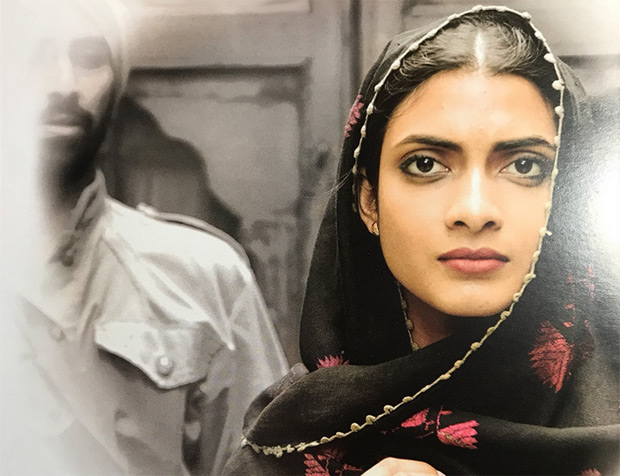
© Akademi. (Click image for larger version)
Much less heralded, but also looking at the Indian experiences in WW1 was Akademi’s The Troth. This used vintage footage of the Indian troops in camp to good effect: the dancers almost seemed to materialise from the film. It gave us the luminous Vidya Patel as the woman who inspired undying devotion. The work may have been sentimental but it was certainly touching. It was probably produced for a tiny fraction of the budget employed for the Royal Ballet’s The Unknown Soldier. Alastair Marriott threw in all manner of film, projections and voiceovers in a muddled production which despite sterling work by his dancers was a complete misfire. I hope it isn’t revived: if the Royal Ballet (RB) want to honour the dead of WW1 they should revive MacMillan’s potent Gloria.
Good things in small places
Some of my more memorable moments have come courtesy of modest productions in smaller venues. Mark Bruce’s Macbeth had the advantage of the atmospheric Wilton’s Music Hall as its setting. Initially, I thought it wasn’t quite up there with his best. However, images such as Duncan’s corpse convulsing on his funeral pyre kept lingering insistently in the mind. Jonathan Goddard and Eleanor Duval had charisma and menace as the leads. Later in the year I saw a very undercooked production of the play at the National Theatre, and realised how much more successfully Bruce had distilled the essence of the work into a potent cocktail.
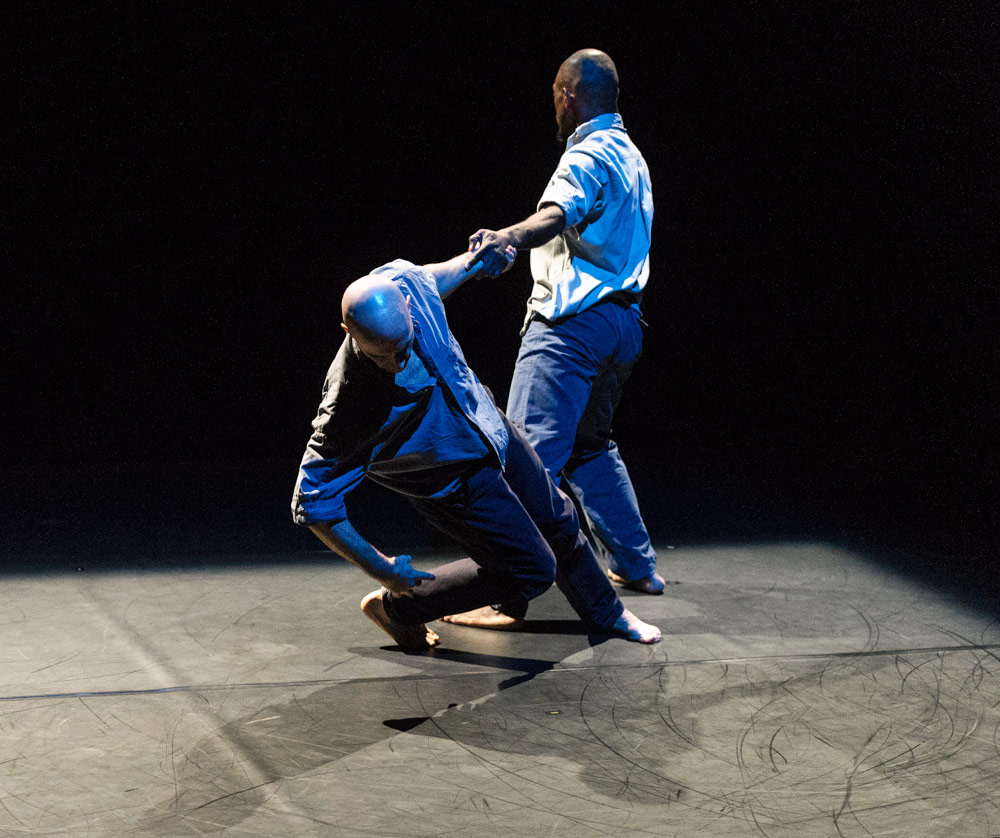
© Foteini Christofilopoulou. (Click image for larger version)
The Print Room at the Coronet is another intimate venue. It was ideal to be up close and personal with maliphantworks2, a mix of revivals and new work from Russell Maliphant. He appeared in duets with the compelling Dickson Mbi which were a mix of confrontation and collaboration, and also with his wife Dana Fouras, a lucid expression of intimacy and empathy that results from a decades long partnership.
At The Place, partnership of another sort was explored by Lost Dog (Ben Duke and Solene Weinachter). Juliet and Romeo took the premise that the lovers had survived, got away to Paris, and had a child but now the marriage has hit a sticky patch. They are older, tired, and haunted by their memories of their idealised younger selves when they were ready to die for love instead of dealing with parking tickets and a stroppy toddler. This was rueful and funny at the same time.
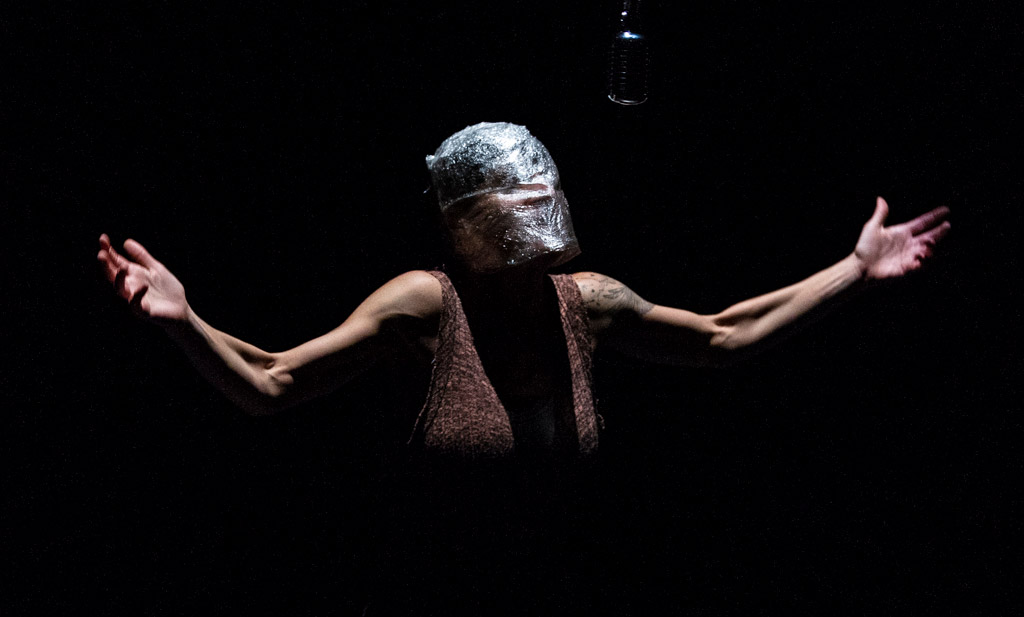
© Foteini Christofilopoulou. (Click image for larger version)
#JeSuis at the Lilian Baylis was Aakash Odedra’s first group work, following on from a range of kathak and contemporary solos for himself. It was made for a group of seven Turkish dancers and explores oppression and the attempt by those in power to squash dissent. It isn’t rooted in any particular country or situation, but a more generalised examination. The strong personalities of the dancers made themselves felt, and the staging had a fluidity and sophistication which you might not expect. The lighting from Alessandro Barbieri was particularly inventive for the confines of the theatre. Odedra (who did not dance) took a significant step forward as a choreographer here.
Big companies, big events
There were of course blockbusters out there this year. Biggest of them all was the Royal Ballet’s new production of Swan Lake, staged by Liam Scarlett. This replaces Dowell’s 1987 version, and can be expected to last decades, so it was a huge task for a young choreographer. John Macfarlane’s designs are extremely handsome, and there were five-star performances from Nunez and Muntagirov. However, Scarlett’s attempt to fix some perceived narrative holes have created other problems and the ending is not as affecting as it should be. And sadly this production marked the start of the RB’s eye watering ticket price rises, which continue on their painful upward path.

© Dave Morgan, courtesy the Royal Opera House. (Click image for larger version)
Not quite on the same scale, but Northern Ballet brought Cathy Marston’s popular Jane Eyre to Sadler’s Wells for its first real London outing. This makes a virtue of its modest set, with the rigours of Jane’s childhood evoked with the sparest of means. It’s a thoughtfully put together work, which shows us (as few ballets do) the importance of relationships between women, and not just between women and men.
New visitors this year
This year we were without any of the large Russian companies visiting the Royal Opera House. But we did have some visitors new to London at Sadler’s Wells. Ballet British Columbia is more of a contemporary company (despite the name) and brought us a triple bill of female choreographers including Sharon Eyal and Crystal Pite. They were a strong, athletic bunch of dancers, with the men looking particularly meaty and powerful, as if they could collectively pull your car out of a ditch without effort. The energy was impressive.
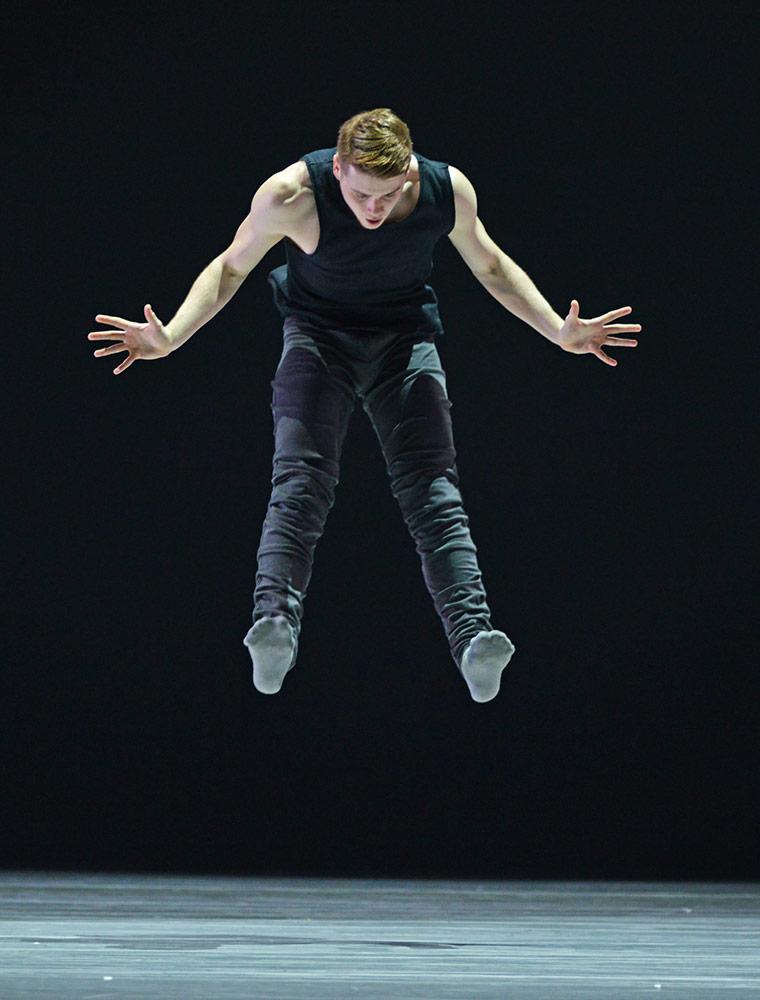
© Dave Morgan. (Click image for larger version)
GöteborgsOperans Danskompani brought two UK premieres to Sadler’s Wells. Both mixed Sidi Larbi Cherkaoui’s rubbery, quirky, fluid dance style with sculptor Antony Gormley’s contributions: massive amounts of clay to play with in Icon, long pliable carbon fibre rods in Noetic. Both were in their way explorations of creativity, creation and destruction. They were entertaining, whimsical, sometimes over earnest but stimulating, nevertheless.
Semperoper Ballett Dresden were another new visitor in the summer, with a programme of Forsythe works, some not seen here before. But Forsythe is a theme this year in himself.
William Forsythe
He’s back in a big way, and the works presented this year were strikingly diverse. At one extreme was the autumn programme at Sadler’s A Quiet Evening of Dance, some of which, danced in silence, was wilfully austere. Semperoper Dresden showed a real mastery of his style in their triple bill, including the widely produced In the Middle, Somewhat Elevated and the more enigmatic Enemy in the Figure. It would be interesting to see how they take on other choreographers.

© Foteini Christofilopoulou. (Click image for larger version)
The most enjoyable Forsythe work by some margin, and probably the most enjoyable new ballet of the year was Playlist (Track 1, 2) created for the men of English National Ballet. Here Forsythe was no longer deconstructing and dismembering ballet, but returning to its vocabulary. Classical steps went clubbing, and it was infectious fun.

© Dave Morgan. (Click image for larger version)
New choreographers, new choreography
Everyone is on the hunt for new or emerging talent, with varying success. Birmingham Royal Ballet (BRB) has a commitment to commissioning a new work each year, but there isn’t much to enthuse over so far with the first two pieces not strikingly memorable. Sadler’s staged a programme of new commissions in the autumn to celebrate the 20th anniversary of its reopening. The best of this was from Botis Seva, effective in its sense of oppression and youthful dissatisfaction, though it felt unrelentingly bleak.
Akram Khan Company are also looking at development, and their offering included Portraits in Otherness, two solos from Joy Alpuerto Ritter and Ching-Ying Chien. These were both powerful performers who had a clear idea of what they wanted to achieve, and it would be good to see more from them.

© Dave Morgan. (Click image for larger version)
Other new choreography this year which sticks in the mind was The Suit, made for the ever-enterprising Ballet Black by Cathy Marston. Put together on a tiny budget with great ingenuity, this featured admirably clear storytelling and gave the dancers complex characters to dig into, which they did with relish.
One work new to the UK this year was brought to us by Nederlands Dans Theater (NDT). Crystal Pite’s The Statement was a theatre piece about political manoeuvrings, trying to pass the blame for a failed initiative among a group of bureaucrats. Funny but horribly apt for our times. At one point the cast hid under the table like naughty children. I would love to see this again.
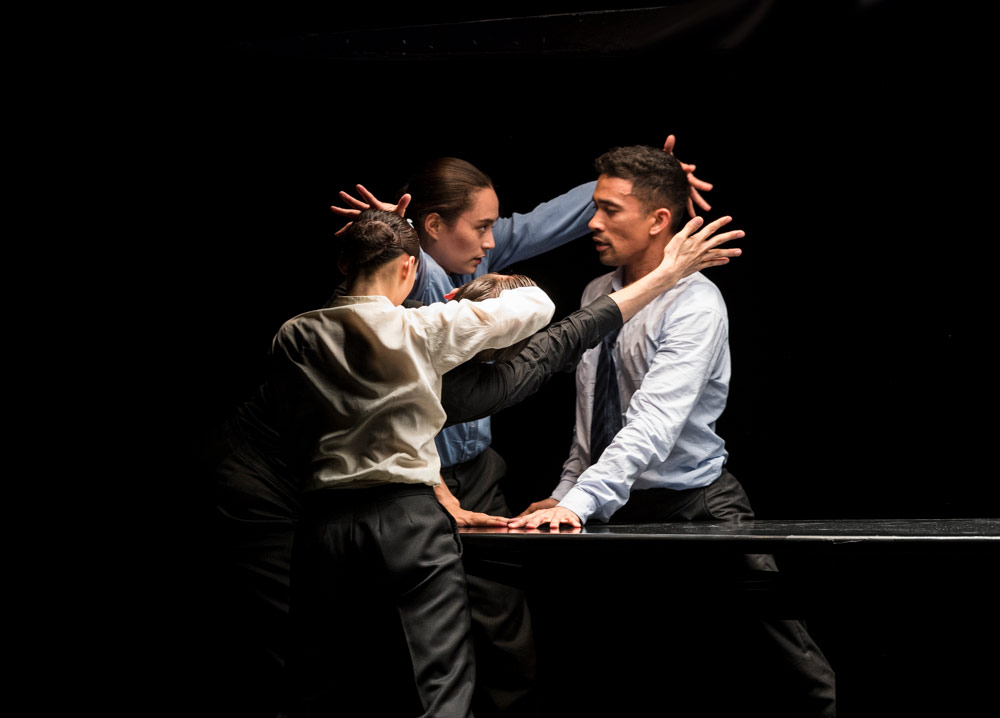
© Foteini Christofilopoulou. (Click image for larger version)
The MacMillan celebration continued
It was autumn 2017 that most of the British ballet companies came together for a Kenneth MacMillan celebration. But there were further events this spring. Viviana Durante in a new role as producer put together a programme, Steps Back in Time, at the Barbican, which revived some of his early works, including Laiderette. It was a glimpse of themes like the outsider that would be developed later in his work. The dancers were drawn from Ballet Black, Scottish Ballet and the Royal Ballet in unexpected combinations.
Up in Leeds, Norther Ballet performed a MacMillan triple bill in March. It was a memorable journey up there in a snowstorm, but worth it. The company were most at home in the emotional pressure cooker of Las Hermanas, his take on the House of Bernarda Alba, but also gave a committed account of Gloria.
Business as usual
Returns of much loved productions are the bread and butter of the larger companies, and these can be illuminated by dancers taking on new roles.

© Dave Morgan, courtesy the Royal Opera House. (Click image for larger version)
At the Royal Ballet, there were debuts as Giselle for Francesca Hayward and Yasmine Naghdi. It’s been a pleasure this year to watch their artistry develop. There was more drama than scheduled in another Giselle when Hallberg was unable to continue partnering Osipova after Act 1, and Matthew Ball was hurriedly called in as a replacement. There was a real buzz in the auditorium as the audience willed him on to make a success out of it. He did, and it has proved quite a year for him.
The Royal seem to be on firmer ground in revivals of classic works than in the commissioning of new work. Muntagirov and Nunez have turned in stellar performances across the repertoire. There have been strong revivals of Mayerling and Bayadère. The corps in the latter had been finely drilled and the opening of the Kingdom of the Shades was an exquisite poetic reverie.
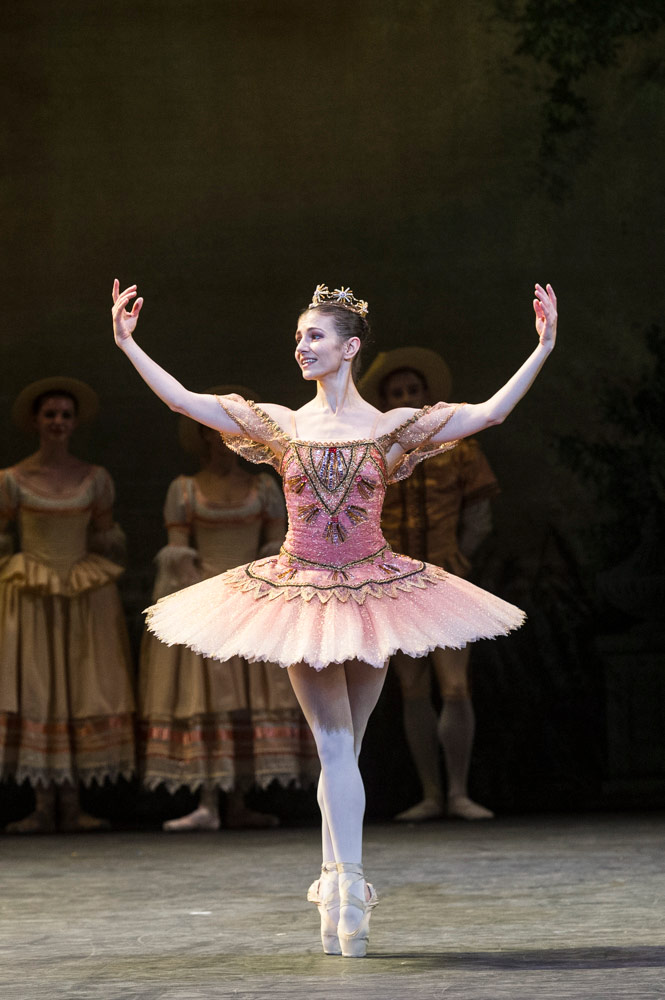
© Foteini Christofilopoulou. (Click image for larger version)
English National Ballet also gave us otherworldly women in white in their production of La Sylphide at the Coliseum in January. But it was their production of MacMillan’s version of The Sleeping Beauty in June that gave us one of the year’s most memorable performances. Alina Cojocaru was an ideal Aurora, charming, gracious, unhurried, glowing.
Birmingham Royal Ballet also looked more successful in revivals than in their new commissions. Their Romeo and Juliet at Sadler’s Wells looked attractively fresh and lively.

© Johan Persson. (Click image for larger version)
Another familiar production returning this year was Matthew Bourne’s Swan Lake, the production revised and refreshed but still with the familiar corps of male swans, maybe looking a little more scary and feral than before. It’s massively popular; the audience were ecstatic. There were lots of excited teenage girls with a keen eye for Matthew Ball (on loan from the Royal) as the Swan / Stranger.
Change is everywhere
There are changes brewing or underway in many companies which might give a sense of unease. David Bintley will be standing down as Artistic Director of Birmingham Royal Ballet after many years and the search for a new director has been widely publicised. Rambert with much less preliminaries announced that their director Mark Baldwin was leaving and the new interim AD was Benoit Swan Pouffer (formerly of the now defunct Cedar Lake Contemporary Ballet) and then confirmed him as a permanent appointment. Richard Alston’s company will cease operation in 2020 as The Place has decided that funds should be directed at younger choreographers.
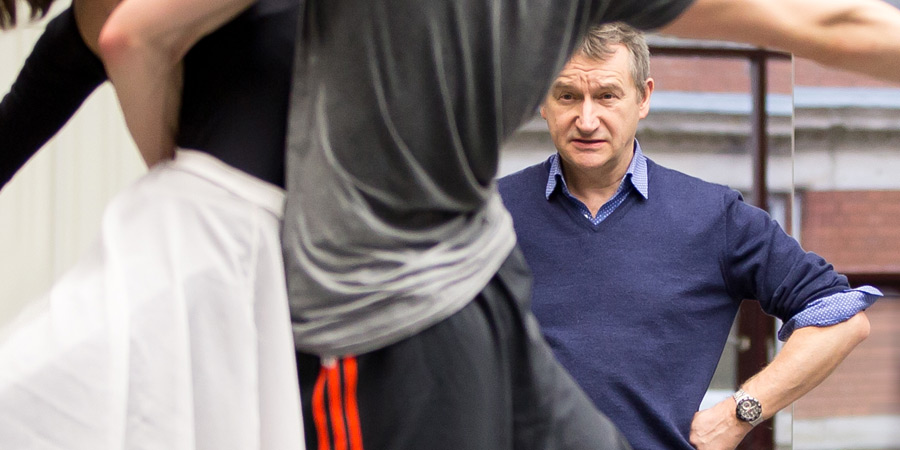
© Andrew Ross. (Click image for larger version)
The Royal Opera House congratulated itself loudly and publicly on the completion of its Open Up project, which includes the renovation of the Linbury Studio Theatre and the welcoming of everyone into their new café and public areas. All of this may be to distract from the quite staggering price rises it has now introduced for the cheaper seats in the main house which is likely to restrict access for many to the art forms it is supposed to serve.
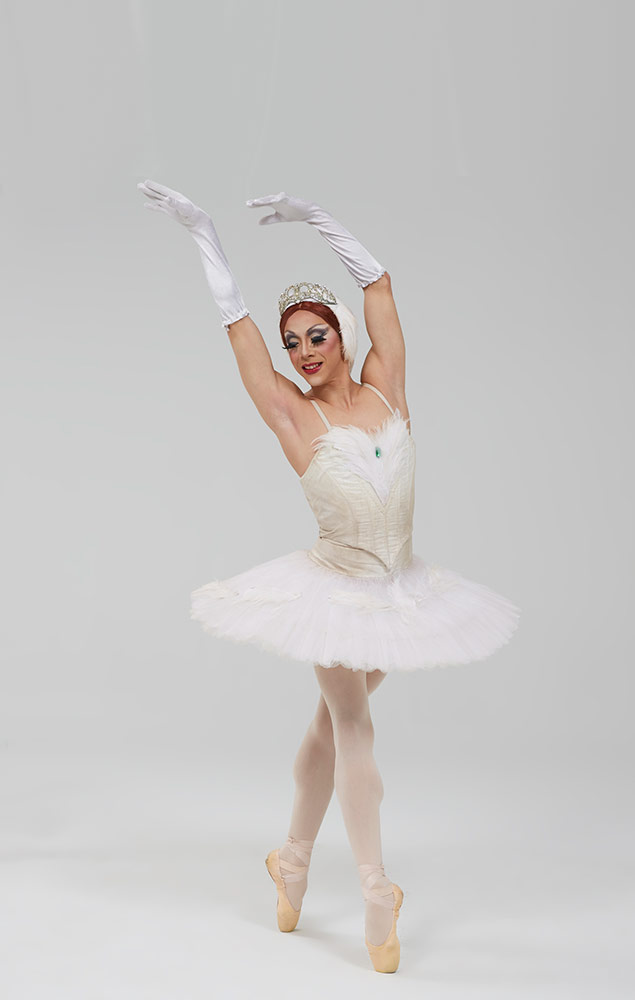
© Zoran Jelenic. (Click image for larger version)
The most cheering performances of 2018
I’d like to end on a happier note. The Trocks (Les Ballets Trockadero de Monte Carlo) returned after a three-year absence in September and how welcome they were. The all-male troupe donned their pointe shoes and several tonnes of make up to set about Swan Lake and other sacred cows of the ballet repertoire. It’s all very tongue in cheek and a quite perfectly judged mix of slapstick and serious attention to technique. They are always terrific value and you are guaranteed to leave with a big grin on your face. They were a cheering experience in uneasy times. Please come back soon.










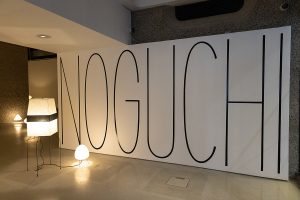



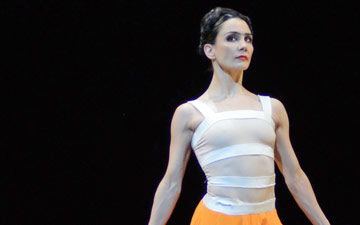
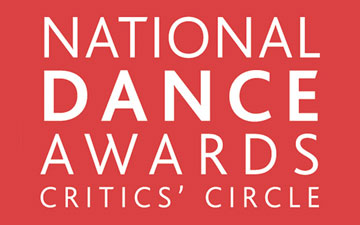

You must be logged in to post a comment.